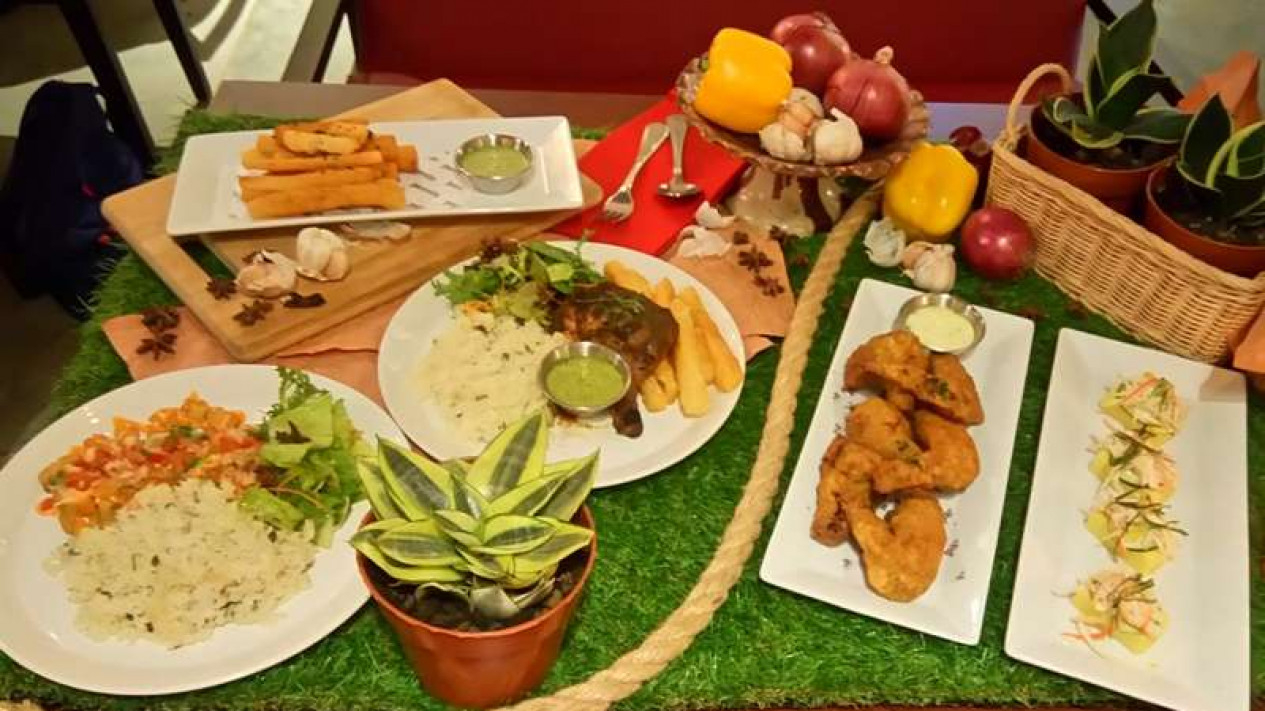The diet of the Incas, who were an indigenous people of South America who lived in what is now Peru, Bolivia, Ecuador and Chile, includes a wide variety of traditional dishes. Here are some examples of typical Inca food:

- Quinoa: Quinoa is a popular grain worldwide and one of the basic foods of the Incas. They process quinoa into various dishes such as soups, porridge, or used as a base for bread and cakes.
- Papa Rellena: Papa Rellena is a Peruvian dish consisting of boiled, ground potatoes and formed into balls. These potato balls are then filled with minced meat, onions, eggs, and spices and then fried until they are browned.
- Ceviche: Ceviche is a dish of fresh fish or seafood preserved in lemon or lime juice. Inca ceviche often used sea fish, such as haddock or piranha, and was mixed with garlic, chili peppers, and cilantro.
- Rocoto Relleno: Rocoto Relleno is a spicy dish consisting of rocoto chilies (a type of large red chili pepper) stuffed with minced meat, potatoes, eggs and cheese. Then, these chilies are roasted until cooked and served with peanut sauce or cheese.
- Chuño: Chuño is the traditional dried potato of the Incas. To make chuño, potatoes are dried in the sun and then trampled to remove their moisture. These dry potatoes have a unique texture and are used in a variety of dishes such as soups or stir-fries.
- Lomo Saltado: Lomo Saltado is a dish of beef stir-fried with onions, tomatoes, chilies and other spices. This dish is often served with fried potatoes and white rice.
- Humitas: Humitas are tamales-like dishes made from corn dough that are steamed or grilled. This corn dough is mixed with butter and spices like garlic, cilantro, and chilies.
- Cuy: Cuy, or better known as guinea pig, is a popular dish in the Andean region. This dish consists of a whole roasted or fried guinea pig, which is then served with potatoes and vegetables.
These are just a few examples of typical Inca food. There are many other traditional dishes that reflect the rich culture and culinary heritage of the Incas.
Next Article
“Quinoa: Introduction and Guide to Making Delicious Quinoa”
Quinoa is a super-grain that is gaining popularity in the health food industry. These seeds originate from the Incas and are known for their rich nutritional content and extraordinary health benefits.
In this article, we’ll take a closer look at quinoa and provide a step-by-step guide on how to make delicious quinoa.
Introduction to Quinoa:
Quinoa (Chenopodium quinoa) is a grain that originate in South America and was grown by the Incas thousands of years ago. These seeds are highly value for their high nutritional content, including complete protein, fiber, iron, and antioxidants. Plus, quinoa is gluten-free, making it the perfect choice for people with gluten sensitivities or those following a gluten-free diet.
How to Make Delicious Quinoa Guide:
Step 1: Material Preparation
- Prepare 1 cup of quinoa and 2 cups of water or vegetable stock.
- You can also add seasonings to taste, such as salt, pepper or your favorite spices.
Step 2: Quinoa Rinse
- Rinse the quinoa under cold water to remove saponins, a natural coating that can give it a bitter taste.
- Use a fine strainer or cheesecloth to make the rinsing process easier.
Step 3: Cooking Process
- In a saucepan with a lid, add the quinoa and water or vegetable broth.
- Season to taste.
- Heat the pot over medium heat until it boils.
- After boiling, cover the pot and reduce the heat.
- Let the quinoa simmer for about 15-20 minutes or until all the water is absorbe.
- Turn off the heat and let the quinoa rest for 5 minutes.
Step 4: Flourishing and Using the Quinoa
- After resting, use a fork to fluff the quinoa. This will separate the grains that were stuck together.
- Quinoa is readily serve as a side dish, salad base, or even use in healthy cakes and breads.
Concluding the Benefits of Quinoa:
Quinoa is a great food choice for those looking to take care of their health and change their diet. These seeds are a rich source of vegetable protein, containing all the essential amino acids needed by the body. Apart from that, quinoa also provides fiber, B vitamins, iron, magnesium, and antioxidants which are important for overall health.
So, try to incorporate quinoa in your daily food recipes and enjoy